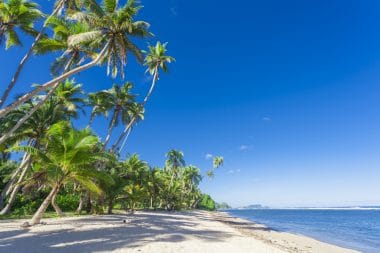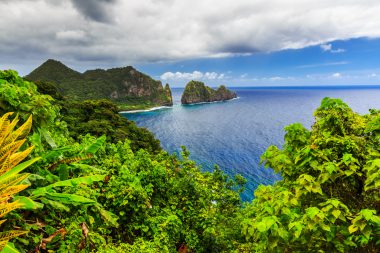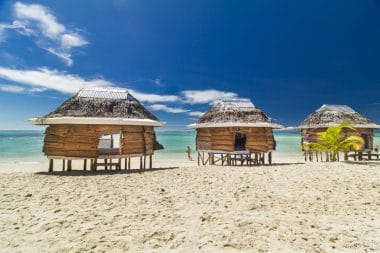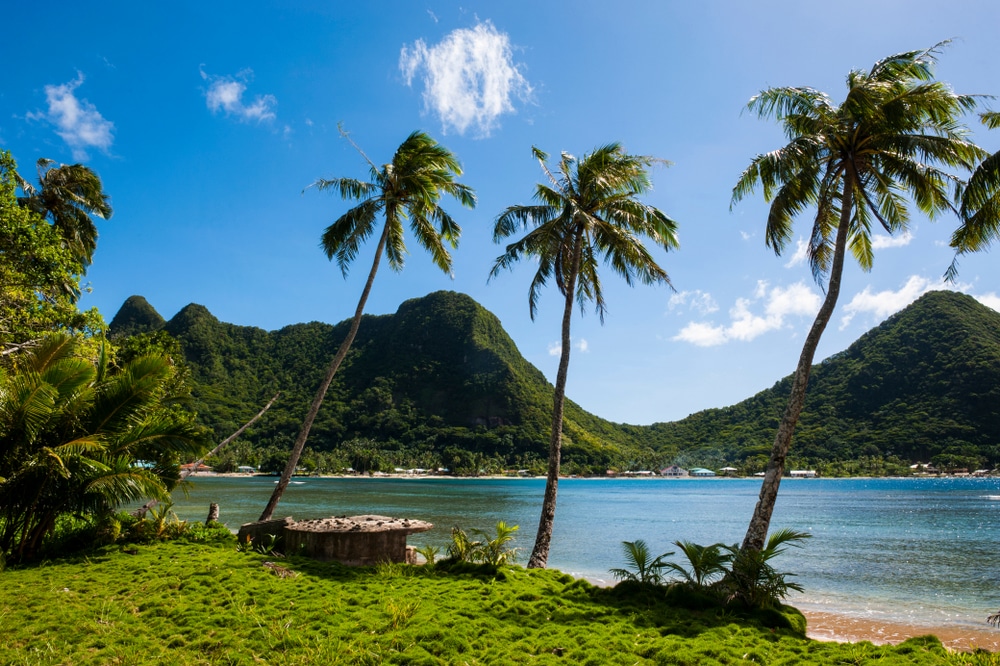The Samoa archipelago consists of the islands of American Samoa (U.S. territory) to the east and the independent Samoa archipelago to the west (formerly Western Samoa). The main island of the island state, which has been sovereign since 1962, is called Upolu. This is also where Apia, the capital of Samoa, is located.

The Pacific climate in Samoa provides tropical warmth all year round, with constant temperatures ranging from 26ºC to 27ºC in some cases even up to 30ºC. The water temperatures are also impressive. They are between 22ºC and 26ºC all year round. The rainy season begins in November and ends in April. The humid trade winds coming from the southeast during this time will cause hot, humid and very rainy weather. The following dry season between May and October is climatically somewhat more pleasant for Europeans due to the prevailing trade winds coming from the northeast and is therefore the best time to travel to Samoa.

For nature lovers and outdoor fans, Samoa is the fulfillment of all their wishes. Natural, unspoilt beaches, rugged mountain slopes covered with lush rainforest, volcanic craters, lava fields, deep gorges and high waterfalls inland.
All this, surrounded by colorful coral reefs in the warm waters of the South Seas, make every vacation in Samoa an unforgettable experience. Active holidaymakers can choose from a wide range of options, such as hiking, horseback riding, diving, snorkelling, surfing, kayaking and sailing. Holidaymakers who prefer to take it a little easier will not be disappointed either. On the often deserted beaches, lined with coconut palms and small beach houses (beach fales), tourists seeking relaxation can relax wonderfully.
Sights and excursion tips in Samoa
Upolu, the main island of Samoa, has a lot to offer. The first port of call for Samoa vacationers is always the capital Apia, because all international flights land here. If you have some time, you should take the opportunity to visit one of Apia’s three large markets, the flea market (Mulinu’u Road), the fish market or the food market (Fugalei Street). A visit can also be made up for later, as the markets (flea market without Sunday) are open daily. At the flea market you can buy Samoan wood carvings and jewellery or one of the traditional Samoan sarongs. The food market offers fresh fruit and vegetables. From bananas to coconuts to taro roots, you can try everything there.

After visiting the city, the Sliding Rocks are a must. In the nearby Papase’ea district, you can slide down into the water on two huge smooth rocks to cool off on the jungle river there. One of the rocks is over five meters high. An adrenaline rush is guaranteed. Leisure and evening entertainment are offered to holidaymakers in one of the many bars and discos. Especially a visit to one of the authentic Samoa culture shows that often take place in Apia should not be missed.
The sandy beaches on the south coast of Upolu are the epitome of South Sea romance. For beach lovers, the beautiful Aganoa Beach with its unique black sand (accessible via a dirt road or by boat from the sea), Matareva Beach, Tafa Tafa Beach or Lalomanu Beach are recommended. The latter with an offshore coral reef for snorkeling and exploring the Samoan underwater world.
A holiday experience of a special kind is an overnight stay in the Fale, one of the wallless, Samoan wooden houses on stilts.

Must-see destinations on Upolo for holidaymakers are the Pupu Pu’e National Park and the Pe’ape’a Cave. The latter can be reached with an approximately one-hour hike through the jungle. And let’s not forget the magnificent waterfalls. The Togitogiga waterfall pours in several cascades into shallow pools where the heated holidaymaker can refresh himself. Other waterfalls worth seeing on Upolo are the Sopoaga Waterfall and the 55-meter-high Fuipisia Waterfall. This is privately owned, but can be visited for a small fee of about 5 dollars. Swimming is allowed at all waterfalls.
But Savaii, the second main island of Samoa, does not have to hide either.
First and foremost, the archaeological site of Tia Seu ancient Mound deserves to be mentioned. These are the oldest man-made stone buildings in Polynesia. The large historic site, originally consisting of over 3,000 buildings, was built between 1100 and 1400 AD. The stone pyramid made of basalt stones, which is well worth seeing, is 12 meters high and covers an area of 65 x 60 meters.
Another attraction and at the same time fascinating natural spectacle on Savaii are the Alofaaga Blowholes. The water fountains, some of which are up to 15 meters high, are created when waves breaking on the coast shoot up at high pressure through holes in the shore rock.
The turtle sanctuary in the village of Sato’alepai Village is an insider tip. An absolute highlight for children, as you can feed the turtles and you can even swim with them.
Also worth a visit is the 50 km² lava field of Saveaula. It was formed during the last eruption in 1905-1911 of the Matavanu volcano, which is still active today. An unforgettable natural spectacle is offered by the Papapapaitai waterfall, with a height of 100 meters the largest waterfall in Samoa. But the Afu Aau Fall at the southeastern end of the island, which consists of a total of three waterfalls, is also worth a visit.
Those interested in culture will not miss out on Samoa either. In the Museum of Samoa in Apia you can get to know the Pacific and especially the special culture of the Samoans. Other attractions in Apia include the Immaculate Conception of Mary Cathedral and the Robert Louis Stevenson Museum.


